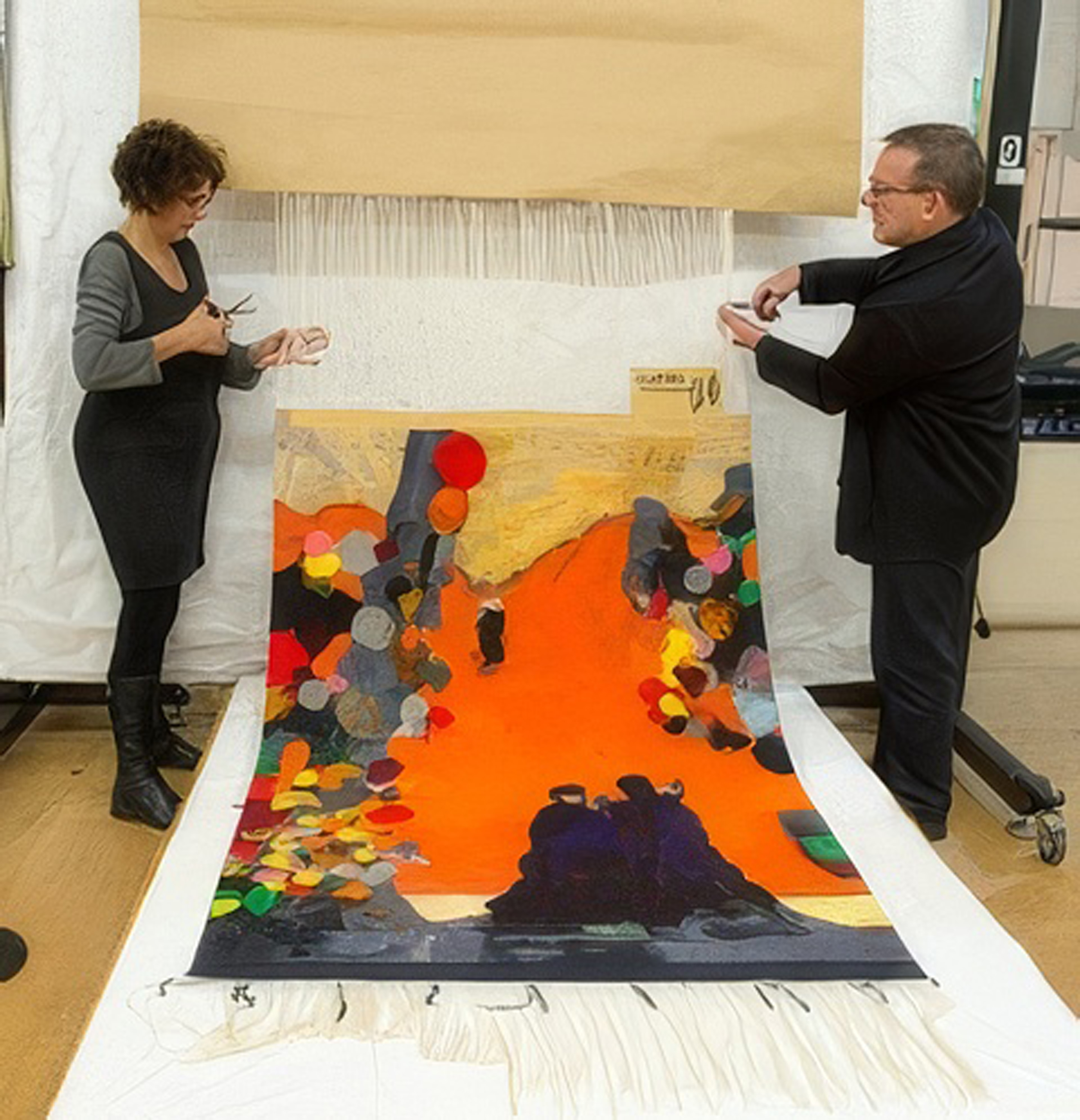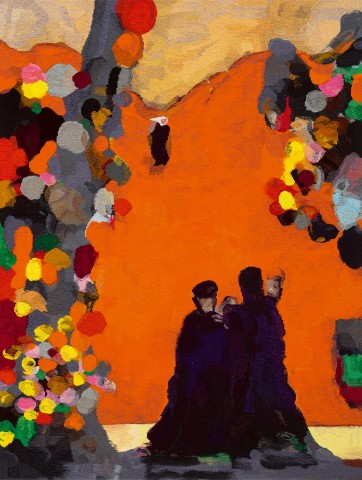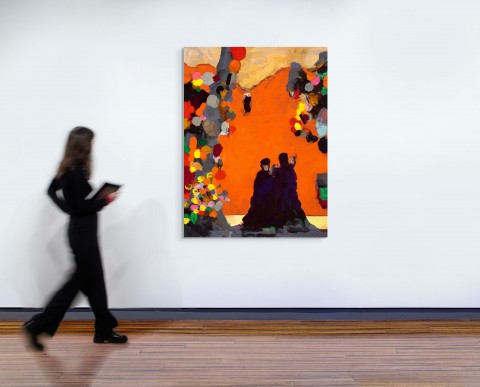ROME, 2012
BRENT HARRIS
hand woven wool and cotton tapestry
157.0 x 118.0 cm
signed with initials and dated by weaver Sue Batten within woven image verso: SB 2012
signed, dated and numbered on Australian Tapestry Workshop label verso
signed with initials within woven image verso: BH
workshop monogram lower left
Australian Tapestry Workshop, Melbourne
Private collection, Melbourne, acquired from the above in July 2015
Australian Tapestry Workshop, 2012 Melbourne Art Fair, Royal Exhibition Building, Melbourne, 1 – 5 August 2012
Current Exchanges: Dovecot and the Australian Tapestry Workshop, Dovecot, Edinburgh, 5 July – 27 September 2014
’Brent Harris at National Gallery of Victoria’, Architecture, AU, 1 June 2012 (illus.) https://architectureau.com/articles/brent–harris–at–the–national–gallery–of–victoria/ (accessed January 2025)
No. 22 (the reassembled self), 2011, charcoal and gouache on board, 42.0 x 32.0 cm, private collection, Sydney
240484 Brent Harris.jpg

Leading Melbourne-based contemporary painter and printmaker Brent Harris has demonstrated his capacity for artistic and personal transformation over thirty years of continuous practice, nimbly harnessing the new formal possibilities of each adaptation of his distinct graphic vocabulary. This sumptuous wool tapestry, Rome, created in 2012 in close collaboration with the Australian Tapestry Workshop in Melbourne, is a quintessential example of the artist’s bold artistic experimentation and illustrates the philosophical theories of regeneration that underpin his latest series of paintings.
Far from the flat geometric abstraction and pale zoomorphic shapes that brought him early acclaim in the mid-1990s, Harris’ series ‘The Reassembled Self’ which began in 2009, signalled an unprecedented aesthetic shift towards nebulous painterliness and rich, saturated colour. Although its reference artwork, a painting on board from 2011, bore the title No. 22 (The reassembled self), the title of this tapestry, Rome, refers to the location of Harris’ artistic epiphany which brought forth this new series: a three-month sojourn as artist-in-residence at the Australia Council studio at the British School at Rome. Painting with unusual spontaneity, Harris responded immediately to the rich art history of his local environment, particularly the Renaissance and Baroque altarpieces. His radical paintings on board featured swirling and dramatic organic forms sketched in charcoal and overlaid with a rich palette of gouache paint, in deep orange, royal blue, red and pink. The spatial ambiguity of this primordial maelstrom of colour, with shadowy forms surging forth between the foreground and confetti background, illustrates the psychological potential of reinvention. In addition to the phrase ‘the reassembled self’, other phrases associated with this radical group of small paintings include ‘surrender and catch’ and ‘the ecstatic moment’, derived from a text from 1976 by American sociologist Kurt Wolff, and psychoanalyst Heinz Kohut’s The restoration of the selfs. These texts describe a theory of knowledge which is an active and never-ending process of self-discovery that resonated with Harris’ creative practice. Harris described the paintings of this series, which were created by an almost surrealist creative abandon, as ‘a gathering of possibilities.’1
Conferring monumentality and a certain medieval resplendence, the translation of a small painting into a tapestry is an ambitious creative endeavour, perfectly executed by the highly skilled artisan weavers at the Australian Tapestry Workshop. Having produced over five hundred contemporary hand-woven tapestries with Australian artists using prized local wool dyed with a palette of over 370 colours, the workshop is a leading producer of public art and a success story for the Victorian government initiative that revived and imported this tradition in the 1970s. Attracted by its texture and warmth, John Olsen and John Coburn were the first contemporary Australian painters to investigate the medium in the 1960s, at the time only offered in historic workshops, Aubusson in France and Portalegre in Portugal. The flourishing local production of tapestries, particularly popular as a haptic adornment to cold urban architecture, has enabled successive generations of contemporary artists to also approach the medium. With Rome, the workshop’s mastery of the warp and weft of the wool has amazingly emulated the semi-translucent layers of Harris’ gouache paint mixed directly on the board, magnifying the subtlety of his colour shifts and softness of the charcoal.
1. Brent Harris, ‘Artist Statement: the Reassembled Self’ at https://brentharris.com.au/e/the-reassembled-self (accessed 12 February 2025)
LUCIE REEVES-SMITH

